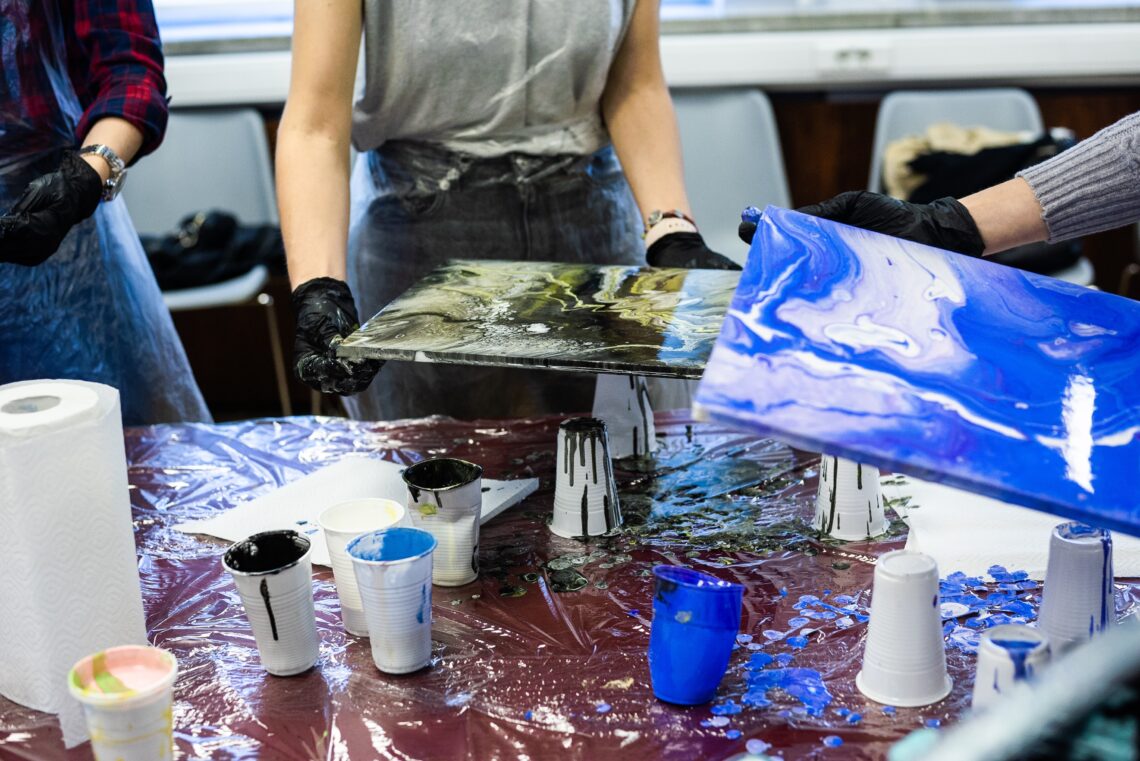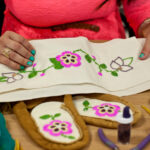
Safe places to fall apart
Beige tote bags with the print “mental health over everything” lined the table outside of the entrance of the Centre for Addiction and Mental Health’s auditorium on the night of Nov. 1, 2021.
Guests arriving to see Rosa Laborde’s True—a play about the traumatic effects that alcoholism and domestic violence can have on a family—were offered self-care bags that included resources such as tissues, a note pad, pen, a bag of stress relief tea and a stone engraved with the word “hope.”
True is one of the many pieces involved in Rendezvous with Madness Festival (RVWM)—an annual event that shines a light on mental health through art installations, educational workshops, film screenings and live performances. Audience members are informed before each performance or screening that active listeners would be on-site in case anyone needed to step out due to the heavy topics that some of the pieces covered.
Expressive arts and mental health
The COVID-19 pandemic took a toll on both the physical and mental health of many people. Research found that during the lockdown, people turned to creative activities including home and art crafts, language activities, fine arts and music performing arts.
There is a growing body of evidence to show that engaging in arts-based activities such as painting, drawing, writing, dance and music have profound positive health impacts on stress levels, emotions, social cohesion and behaviours.
As many people continue to grapple with the traumatic effects of the pandemic, the arts may be a form of mental refuge and personal fulfilment. Combining the therapeutic benefits of art-making with a collaborative setting can further enhance connection, foster social change and promote inclusive dialogues.
Coping with trauma, collectively
Alexandra Caprara, an MFA student in disciplinary arts and research at Simon Fraser University, has been heavily involved in the arts community over the past five years.
“You are always going to be a better artist when you work collaboratively,” Caprara said. “The inspiration and exchange of energy you get when you’re working with someone who is passionate about the same idea—that process is so magical and inspiring to me.”
One study examined the positive benefits that community art initiatives had on survivors from an earthquake that occured in Nepal in 2015. After much loss, destruction and trauma, community art initiatives provided relief, support and healing to those consuming and creating art.
Caprara said that for her, “art is a place to put big feelings.” In October 2020, Caprara along with her co-collaborator showcased their art installation, ThreadBare, at RVWM festival. ThreadBare was created with the intention to give voice to survivors of sexual and domestic violence.
The process of creating ThreadBare involved receiving anonymous submissions and clothing from survivors who wanted to share their story. Once submissions were received, Caprara stitched the text into the pieces of clothing which would then be displayed as part of the installation. “Some of the pieces that we got were very hopeful and heartwarming and other ones were a little bit triggering,” said Caprara.
However, putting together all the pieces into one collective was a really powerful experience for not only Caprara but many of the contributors and viewers as well. “We’d get emails all the time of people thanking us for giving them the space to talk about stuff like that,” Caprara said.
On top of the physical tactile aspect of the installation, there was also a sound system that was hooked up and would play piano notes whenever someone used the hashtag #MeToo on Twitter.
Breaking barriers and increasing accessibility
Cultivating a sense of belonging is at the heart of Art Starts—a nonprofit organization that provides art programs and mentorships to underserved communities in the GTA. Nicole Peña, program director at Art Starts, said that there are many privileges that marginalized communities are excluded from when it comes to engaging in the arts community.
Families from low-income households may not have access to attend “highbrow” art spaces and events and therefore may not even know that they exist.“We have a project right now called the Inclusion project and we’re trying to talk about how a lot of people are not included in certain dialogues—The Opera Company, the Toronto Symphony, The AGO,” said Peña.
In fall 2021, Art Starts partnered with North York Harvest to paint shipping containers for a food bank in order to raise awareness and open conversations about food scarcity, farming and sustainable living. “We had music, everyone seemed to bond together, I saw them hanging out and I think that it was a cool kind of environment because we were actually working with professional artists,” she said.
Joining a community art group is a great way to meet new people, participate in dialogue around social issues and even learn a new skill. Whether someone practices art at an intermediate level or is a beginner, getting involved allows individuals to support one another and themselves.
About the author
Amy is a former reporter for Youth Mind. She is passionate about oat milk lattes, any film featuring Adam Driver, and tending to her tiny indoor Basil garden.







